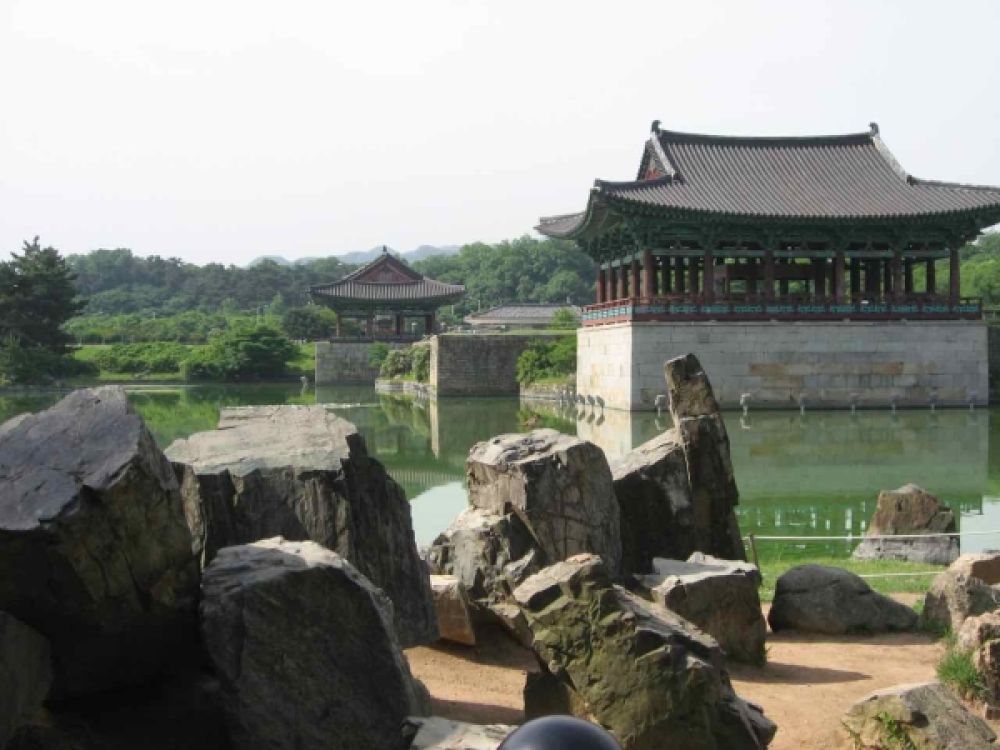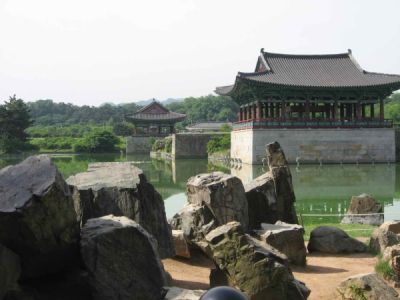

Explore the majestic architecture and serenity of Bulguksa Temple, a UNESCO World Heritage Site. This historic temple showcases the pinnacle of Buddhist art in the Silla kingdom with its detailed carvings and beautiful pagodas. Visitors are awed by the Dabotap and Seokgatap stone pagodas, as well as the Golden Buddha statues. Stroll through the temple grounds while admiring the exquisite craftsmanship and the harmonious blend of art and nature. A guided tour can offer in-depth insights into the temple's rich history, significance, and the Buddhist teachings it embodies. Bulguksa Temple is not only a symbol of spiritual depth but also an impressive testament to the skills of ancient Korean artisans.
Witness the Seokguram Grotto, tucked away on the slopes of Mount Toham. A component of the Bulguksa Temple complex and equally recognized as a UNESCO site, this artificial grotto encloses a monumental statue of the Buddha looking out to sea. The grotto is a masterpiece of Buddhist art, and its construction in the 8th century was an ambitious project requiring advanced engineering skills. The sense of tranquility here is palpable as the Buddha, surrounded by guardian deities, seems to be in deep meditation. The synergy between the natural environment and the spiritual presence is an unforgettable experience, providing insight into the depth of religious devotion present during the Silla dynasty.
Delve into the heart of ancient Silla culture at the Gyeongju National Museum. Its extensive collections of art and artifacts from the Silla dynasty offer glimpses into the wealth, craftsmanship, and daily lives of this ancient kingdom. A highlight is the Divine Bell of King Seongdeok, an enormous bronze bell with a beautiful, resonating sound. The museum also features crowns, ornaments, Buddhist relics, and weaponry, providing a comprehensive overview of the Silla period. Plan to spend some time exploring the museum's outdoor exhibitions, which include millstones, pagodas, and other historic relics distributed throughout its extensive garden area.
Stroll around Anapji Pond, especially enchanting during the evening when the lights illuminate the pond and the surrounding palace ruins. Once a royal garden complex for the Silla royalty, it reflects a refined aesthetic with its elegant pavilions and lotus flowers floating on the water's surface. The reflections of ancient structures in the pond create a magical and peaceful atmosphere. Visitors are often mesmerized by the dramatic interplay of light and shadow, offering a glimpse into the luxury and cultural sophistication of the Silla Dynasty. An evening walk here is a romantic, contemplative activity that highlights the beauty and the history of traditional Korean landscapes.
Discover one of the world's oldest surviving astronomical observatories at Cheomseongdae. Dating back to the 7th century, this cylindrical stone tower exemplifies Silla's scientific advancement. It is an architectural wonder considering its age, designed for tracking stars and celestial events. At its base, visitors can learn about the observatory's use and the astronomical knowledge of ancient Korean scientists. The heritage site is nestled within a public park, making it a pleasant spot for picnics or leisurely walks, and serves as a testament to humankind's timeless curiosity about the cosmos and its attempts to fathom the mysteries of the universe.
Venture into Tumuli Park, an area dotted with royal tombs from the Silla kingdom. These grass-covered mounds are fascinating relics of a bygone era, and you can actually enter Cheonmachong, one of the few tombs excavated and open to visitors. Marvel at the burial customs, the golden artifacts, and the mysterious 'Heavenly Horse' painting that was uncovered here. Exploring this tomb gives a unique perspective on the Silla dynasty's burial customs, their beliefs in the afterlife, and the remarkable craftsmanship of tomb builders. Throughout the park, informational signs provide context and explain the significance of the mounds, adding depth to the exploration.
Wander through the remnants of the ancient Silla dynasty's Donggung Palace and the adjacent Wolji Pond, once known as Anapji. The site used to be a place for royal banquets and festivals and has been partially reconstructed to give visitors an idea of its former greatness. The reflective pond and the beautiful traditional buildings set against the backdrop of lush gardens and tranquil waters offer an appealing snapshot of Korean imperial life. By day, it's a picturesque location for walking and photography, while at night, the illuminated palace and pond create a romantic and mystical atmosphere, perfect for enjoying the cool evening air and contemplating Korea's historical legacy.
Hike around the ruins of the Banwolseong Fortress, where the ancient kings of Silla built their palace. Today, little remains but the earthen walls and the evocative ambience of a bygone era, but the site is rich in heritage. It offers excellent walking trails along the fortress with panoramic views of Gyeongju. This site invites contemplation on the region's past and provides an escape into nature. During spring, the area is particularly stunning as it is blanketed with lovely cherry blossoms, creating a romantic, ephemeral scenery that contrasts with the deep-rooted history embedded in the ground beneath.
